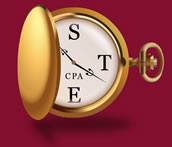As the first filing season that implements the law known as the Tax Cuts and Jobs Act (TCJA), P.L. 115-97, moves forward, many taxpayers are becoming frustrated to learn that their refunds are smaller or they owe money for the first time. The substantial uncertainty surrounding the TCJA’s implementation and the updated federal tax withholding tables presented a challenge for many taxpayers in understanding and accounting for their tax liability this first year. This is why the AICPA started pushing for appropriate transitional provisionsas early as November 2017 — even before the TCJA was enacted.
Adding insult to injury, some taxpayers are now faced with penalties for the underpayment of estimated taxes. These taxpayers were simply unaware they needed to make an estimated tax payment, perhaps for the first time, or ask their employers to withhold more from their paychecks.
As soon as the TCJA became effective, the IRS was asked to reflect the TCJA’s changes in the withholding tables to “allow taxpayers to begin seeing the changes in their paychecks as early as February [2018]” (IRS, IRS Statements — Withholding for 2018, Dec. 26, 2017). In other words, the IRS was asked to adjust the withholding tables to reflect an “accurate” tax liability. However, taxpayers don’t realize that accurate means more closely matching their withholding to their tax liability, which results in near zero refunds.
More importantly, TCJA provisions affect taxpayers differently (and some families actually have a higher tax liability for 2018). The adjusted withholding tables could not accurately account for all of the factors, including the elimination of the personal and dependency exemptions or reduced itemized deductions.
Worried that some taxpayers depend on their refunds, the IRS started a “Paycheck Checkup” campaign for taxpayers to check their withholdings through the withholding calculator. Unfortunately, to use the IRS’s withholding calculator, taxpayers must have some understanding of taxes and the different types of income — knowledge that many taxpayers don’t have. Additionally, news of the IRS’s Paycheck Checkup had limited reach. Mainly taxpayers and practitioners that closely follow IRS news releases heard about it.
On Jan. 16, 2019, the IRS released Notice 2019-11, stating that it would waive the underpayment penalty for individuals who paid, by Jan. 15, 2019, at least 85% of the tax due for the current year (in contrast to the usual 90% threshold). The lowering of the threshold was a good first step, but it is not enough.
The AICPA informally surveyed its members asking what they thought was appropriate penalty relief. The survey shows that members also believe, basing their responses on their clients’ tax data, that providing penalty relief for taxpayers who paid at least 85% of their tax due isn’t enough. The results showed that “many people trust the withholding tables to adequately withhold so they do not owe come filing time” and that “most taxpayers did not realize the increased net pay throughout the year and are now shocked with their underpayment” (AICPA Survey, “Tax Reform Implementation & Penalty Relief” (March 5, 2019)).
Ultimately, taxpayers are responsible for understanding and paying their tax obligations. However, taxpayers faced substantial uncertainties in determining the amount of their actual 2018 tax liability. Regulations addressing the many changes made by the TCJA were not available or were released late in the year in the form of proposed regulations or interim guidance. Many taxpayers were unable to estimate their 2018 tax liability with sufficient certainty to avoid the underpayment or late-payment penalty.
Since the withholding tables are based on the TCJA’s changes and most taxpayers will pay less tax under the TCJA, it is reasonable to assume that wage earners relying on their wage withholding should not have to worry that they paid in at least 85% of the current year’s tax liability to avoid penalties — especially when their withholdings have been sufficient to cover their tax liability in the past.
When the last major overhaul of the Internal Revenue Code was implemented — the Tax Reform Act of 1986, P.L. 99-514 — Congress recognized the problems taxpayers would face in accurately calculating their tax liability in the first year of implementation. To provide taxpayers necessary relief, the Tax Reform Act of 1986 provided a blanket penalty waiver for failure to pay estimated tax. Unfortunately, with the TCJA, there is no similar provision.
Furthermore, Treasury officials believe that a blanket penalty waiver is not the right approach since taxpayers that intentionally or perpetually fail to comply with their tax obligations would receive a “free pass.” However, to prevent any abuse or “windfall,” the IRS could consider granting the penalty relief to the taxpayers who do not have a history of underpaying their taxes. For example, the IRS could limit relief to taxpayers who were not subject to a failure to pay estimated tax penalty in the prior year.
Based on the AICPA’s anecdotal analysis and the survey results, taxpayers need more meaningful relief than is offered by Notice 2019-11. To strike a balance between the blanket penalty waiver and the limited relief for taxpayers that paid at least 85% of their tax due, taxpayers should receive relief from underpayment penalties if:
- Taxpayers paid at least 80% of the tax due for the current year, or
- Taxpayers paid 80% (100% if adjusted gross income exceeds $150,000) of the amount of tax shown on their U.S. income tax return for the prior year.
Although taxpayers are responsible for complying with the tax laws, it is important to recognize that they faced a tremendous amount of changes and uncertainty for the 2018 tax year. Fundamentally, penalties should apply to encourage voluntary compliance. Given all the changes this year, the IRS should consider providing additional penalty relief to those taxpayers making a good-faith attempt to meet their tax obligations.


Leave A Comment